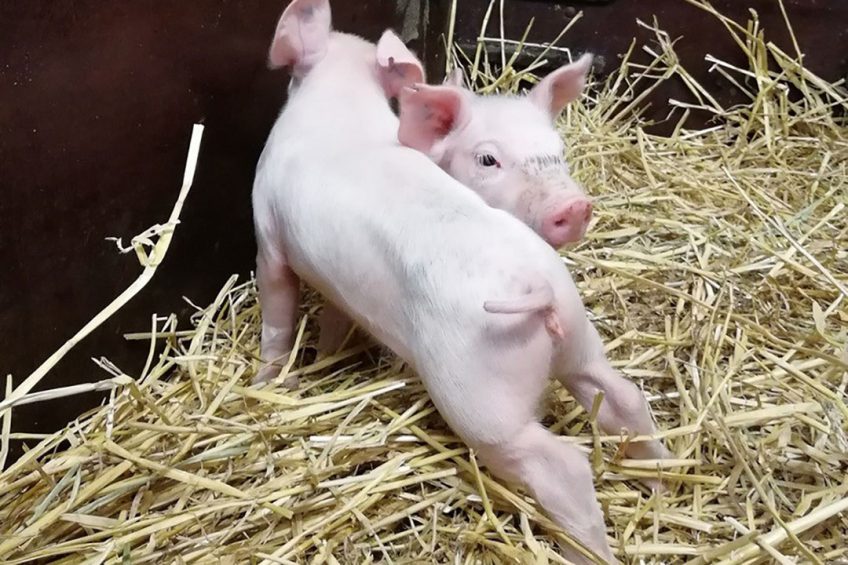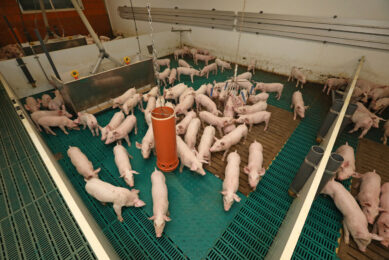Gene editing offers avenues to end castration

New gene editing developments could be moving the global pork industry closer to the end of pig castration. Especially in the European Union, this leads to an interesting discussion as gene editing is still not permitted. Will the possibility of ‘solving’ the boar taint issue change that?
Across the globe, many groups are working on affordable and reliable ways for the pork industry to avoid the practice of physical castration. Castration is a painful procedure done on tens of millions of young male pigs around the world each year. It prevents the meat of these pigs from having boar taint, an offensive odour or taste caused by the release of certain natural hormones after a male pig reaches puberty.
Exciting developments
Gene editing, using tools such as CRISPR/Cas, offers several avenues to prevent the need for castration, and there are several exciting developments to report on. Dr Björn Petersen and his colleagues at the Friedrich-Loeffler-Institut (Federal Research Institute for Animal Health) in Germany has edited out a gene called SRY in pigs, a gene found on the Y (male) chromosome of all mammals and the main “genetic switch” for male gender development. This research builds on previous studies showing that “knocking out” the SRY gene in male mice and rabbits resulted in suppressed testis development and female sex organs. These mammals thus have what is called a female phenotype but their genotype is male. If no testes develop in pigs, no boar taint results.
Edited pigs
These edited pigs, after developing from embryos in recipient gilts, had a vulva, uterus, ovaries and other female reproductive parts. They were checked for signs of oestrus at six months and showed none. In post-mortem examinations at nine months, Petersen reports that “we found no functional follicles on the ovaries and the uteri had not matured”.
Two possible approaches
To achieve commercial production of these pigs, there are two possible approaches. “The first is to do the edit not in embryos but in normal adult boars so that their sperm carries the edit,” Petersen explains. “We are trying this by integrating the CRISPR/Cas vector onto the Y-chromosome of boars, under control of a spermatogenesis-specific promoter, and then testing to see if the sperm produced have the edit. When this sperm is used to impregnate a normal female, she will give birth to female pigs and to ‘male’ pigs with a female phenotype.”
Destroying the Y chromosome
The second approach is to completely destroy the Y chromosome in the sperm. “Basically, you create so many breaks that it falls apart,” says Petersen. “This has already been done in mice. However, in ‘cutting’ apart the Y chromosome, you need to do the cutting at genes that don’t exist on the X (female) chromosome. The X and Y chromosomes share many genes and we need the X chromosome to stay intact.” Again, the CRISPR/Cas vector would be integrated under the control of a spermatogenesis-specific promoter, leading to non-functional Y-chromosomal sperm and intact X-chromosomal sperm. This approach could be described, says Petersen, as “some sort of in vivo sperm sorting.”

Petersen favours the latter approach as it results in offspring with no gene edits, offspring that are all phenotypically and genotypically female, with one X chromosome from their mothers and one from their fathers, as is the case with all normal female pigs (and indeed, all normal female mammals). There should be no difference, he adds, in meat quality and reproductive performance.
Regulatory and consumer acceptance
Returning to the gene-editing approach, Petersen makes several comments on regulatory and consumer acceptance. He first explains that while all gene-edited organisms are currently considered genetically modified (GMO) in the European Union (EU) and not legal to commercially produce, gene-edited plants and animals are legal to produce in other jurisdictions. And while in his view the global pork industry is already very interested in gene-edited pigs, he thinks consumer acceptance for gene editing can best be achieved by showing how it solves a serious environmental or animal welfare problem, like castration.
Petersen reports that in the EU “there is a lot of discussion about gene editing”. He says, “I have had some questions from the EU Commission about its benefits and risks. It appears the EU parliament may allow some gene editing in future. What other options does the EU have but to allow it? It is already having an impact on trade. However, consumer acceptance in the EU is another matter. That cannot be changed by law.”

Perceived benefits
Consumer acceptance of gene editing as an alternative to castration in pigs was recently studied in Brazil with the results published in June 2019; perceived benefits were found to play a role. The research team, from the Universidade Federal de Santa Catarina in Brazil, Pontificia Universidad Católica de Chile and the University of British Columbia in Canada found that just over half of the participants considered gene modification of male pigs acceptable. The results were not influenced by sex, age, religion, level of education or whether participants lived in an urban or rural area.
While acceptability was not related to basic knowledge of genetic biotechnologies, nor to awareness of issues related to pig castration or boar taint (both of which were low), it was positively related to perceived benefits and negatively related to perceived risks. “Participants that considered gene modification of pigs acceptable justified their position using arguments that it improved animal welfare,” the research team reports in their study summary. “In contrast, those who were not in favour were generally opposed to genetic modification.”
In addition, a major concern raised by a large majority of participants (80%) was “unforeseen downstream consequences of using genetic modification in this manner”.
Other gene editing research related to boar taint
In the USA, gene editing has recently been used by an alliance between Hendrix Genetics and Recombinetics/Acceligen to keep male pigs pre-adolescent. These pigs never develop testes because the genes required for them to begin puberty are removed. To commercialise this, however, some males with the gene edit must obviously produce sperm; the strategy being tried to achieve this involves injection of breeder males with hormones. The feasibility of this on a commercial scale is yet to be worked out, and it is also unknown at this point whether these pre-adolescent male pigs will have the same meat quality, growth rate and so on as conventional castrated pigs. In addition, consumer acceptance of exogenously supplied hormones, even if the hormones are only supplied to gene-edited male breeder pigs, may be low.
In 2018, Pig Progress reported on gene-editing research into how genes in the testes of pigs that relate directly to boar taint (the production of androsterone and skatole) can be ”knocked out”. In terms of updates, a study by Danish researchers (University of Copenhagen, Technical University of Denmark, the Danish Pig Research Center and Danish Meat Research Institute) identified some of these genes and published their results in September 2019.
Boar taint (and castration) could also be avoided if sex-sorted sperm was feasible. In 2017, Pig Progress reported on developments with this technology, but the company, when contacted recently, reports that no significant progress has been made with sorting speed or other factors needed for successful commercialisation.











